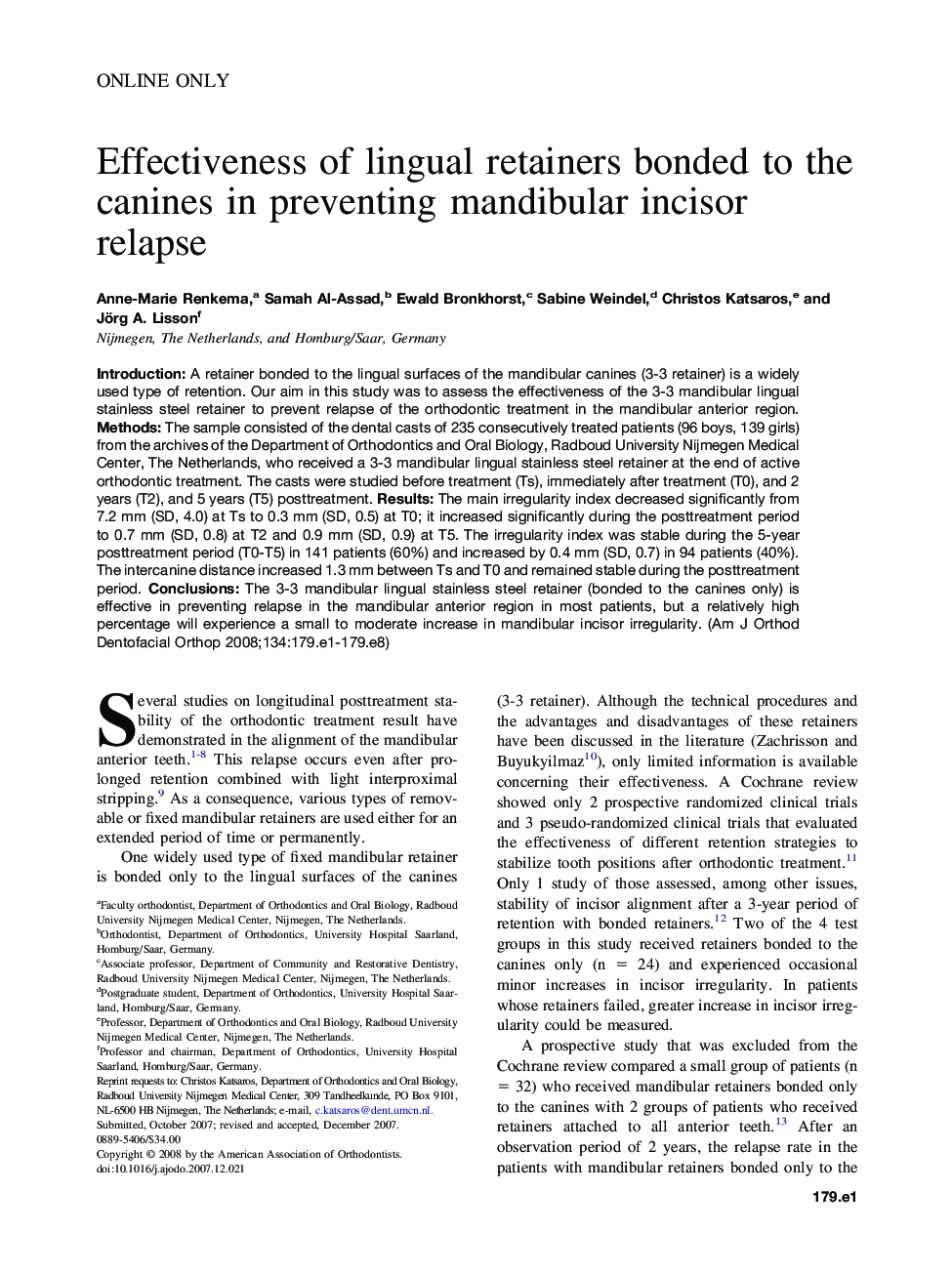| Article ID | Journal | Published Year | Pages | File Type |
|---|---|---|---|---|
| 3118521 | American Journal of Orthodontics and Dentofacial Orthopedics | 2008 | 8 Pages |
Abstract
Introduction: A retainer bonded to the lingual surfaces of the mandibular canines (3-3 retainer) is a widely used type of retention. Our aim in this study was to assess the effectiveness of the 3-3 mandibular lingual stainless steel retainer to prevent relapse of the orthodontic treatment in the mandibular anterior region. Methods: The sample consisted of the dental casts of 235 consecutively treated patients (96 boys, 139 girls) from the archives of the Department of Orthodontics and Oral Biology, Radboud University Nijmegen Medical Center, The Netherlands, who received a 3-3 mandibular lingual stainless steel retainer at the end of active orthodontic treatment. The casts were studied before treatment (Ts), immediately after treatment (T0), and 2 years (T2), and 5 years (T5) posttreatment. Results: The main irregularity index decreased significantly from 7.2 mm (SD, 4.0) at Ts to 0.3 mm (SD, 0.5) at T0; it increased significantly during the posttreatment period to 0.7 mm (SD, 0.8) at T2 and 0.9 mm (SD, 0.9) at T5. The irregularity index was stable during the 5-year posttreatment period (T0-T5) in 141 patients (60%) and increased by 0.4 mm (SD, 0.7) in 94 patients (40%). The intercanine distance increased 1.3 mm between Ts and T0 and remained stable during the posttreatment period. Conclusions: The 3-3 mandibular lingual stainless steel retainer (bonded to the canines only) is effective in preventing relapse in the mandibular anterior region in most patients, but a relatively high percentage will experience a small to moderate increase in mandibular incisor irregularity.
Related Topics
Health Sciences
Medicine and Dentistry
Dentistry, Oral Surgery and Medicine
Authors
Anne-Marie Renkema, Samah Al-Assad, Ewald Bronkhorst, Sabine Weindel, Christos Katsaros, Jörg A. Lisson,
